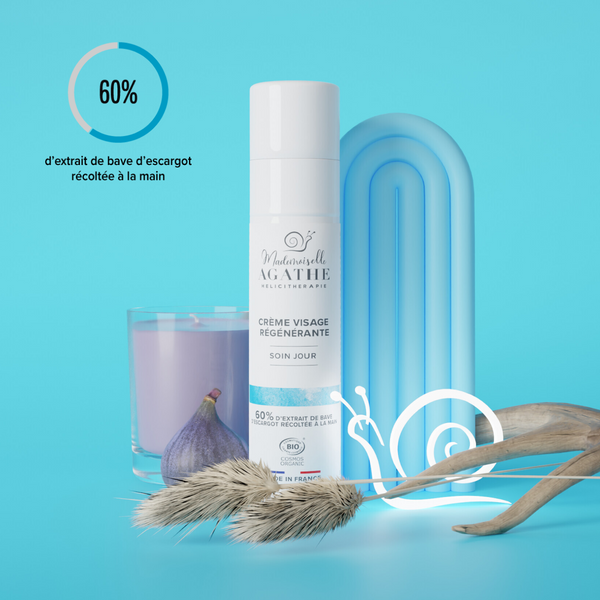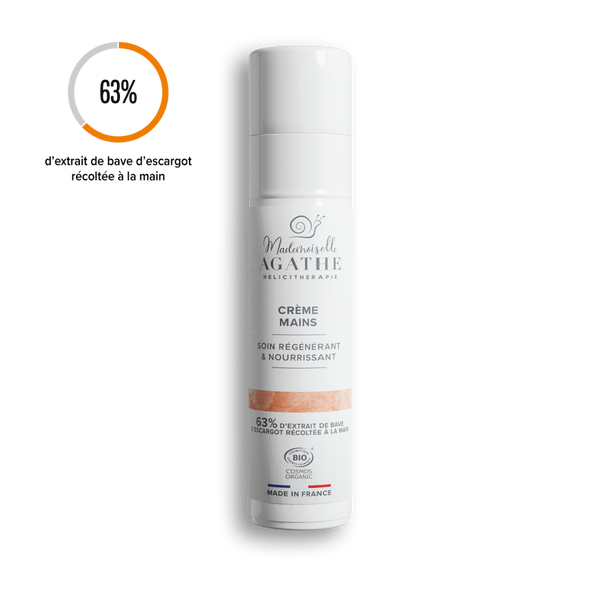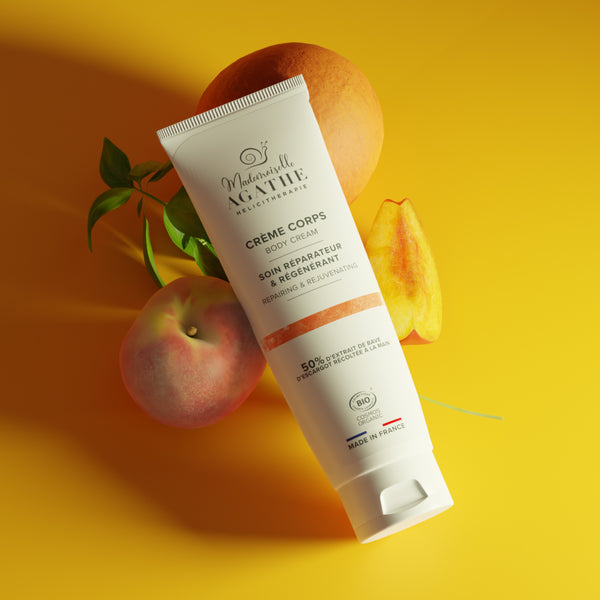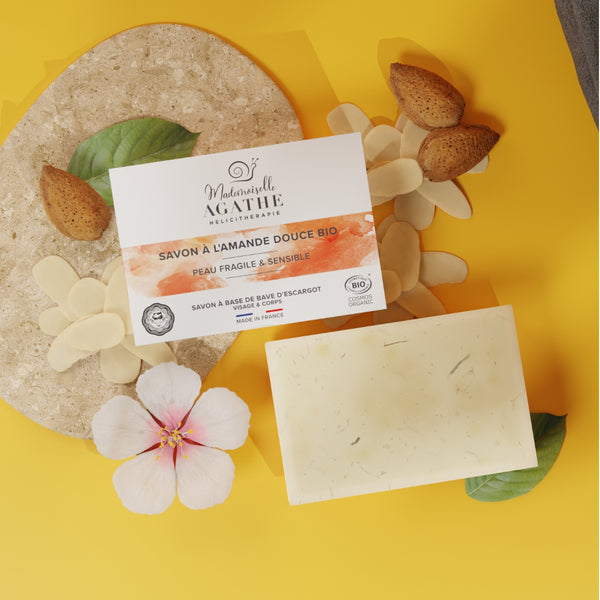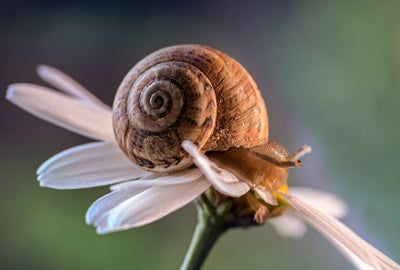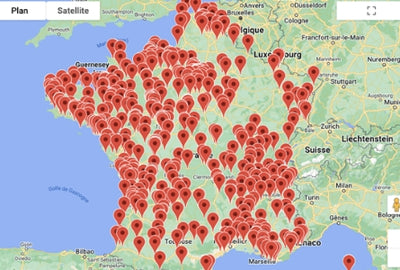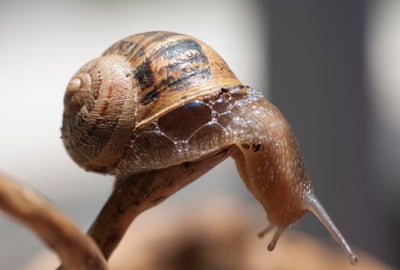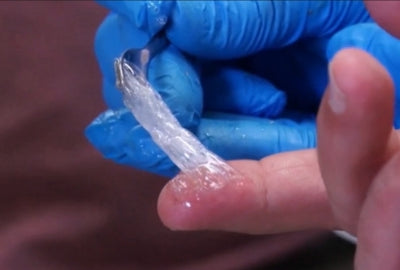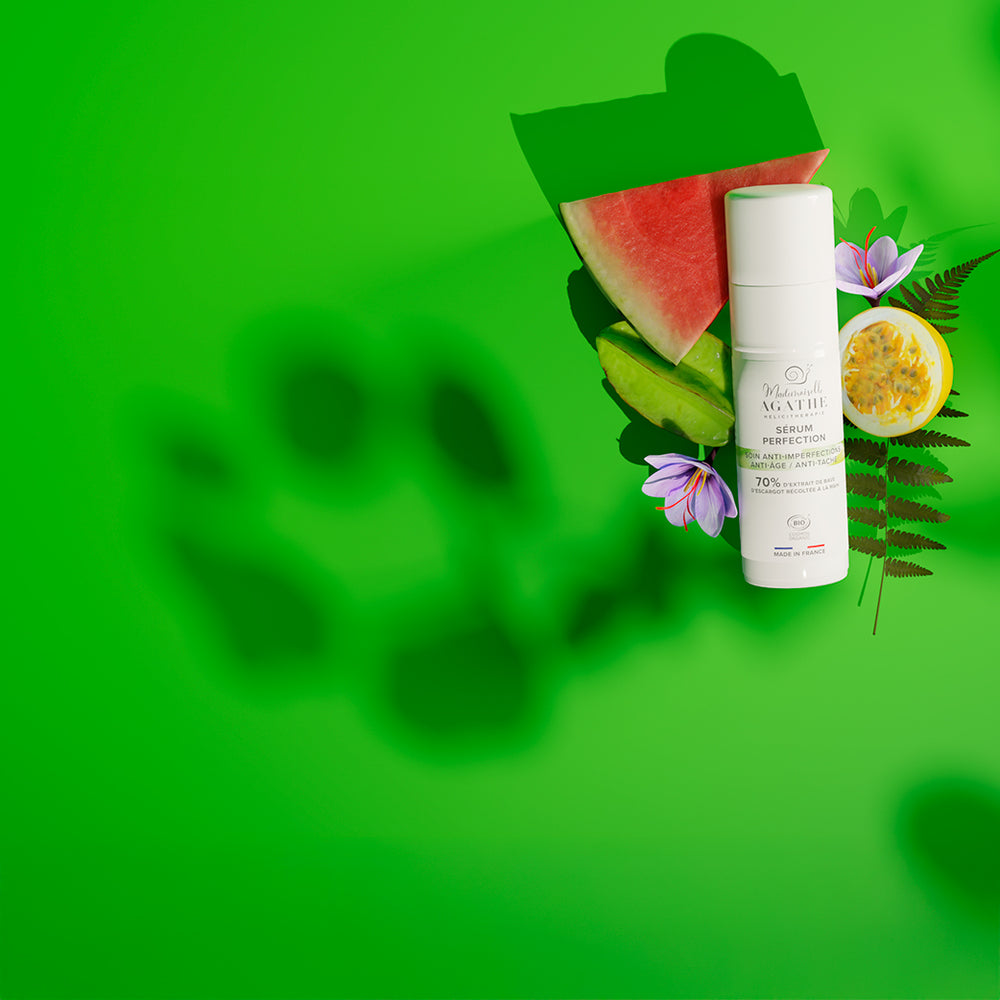All about the life of the snail...
With more than 540 million years of natural evolution, the snail is an extraordinary small animal.
I live on 1 foot, I have eyes at the end of the horns, 4 lips around my mouth, 1 single nostril, more than 15,000 teeth, I drool by my foot, lay by my head, drink by my skin. I have no hair, feathers or scales to protect me but I can move 170 my own weight. I am 99% active at night, I hibernate in the winter and I can even aestivate in the summer if it is too hot.
I have practically not evolved since my origins, I "moved" from the sea to the land, which forced me to a necessary adaptation from the aquatic world to the terrestrial world and which explains my oddities of aspect and of behavior.
I am a soft worm which drools to stay moist and which, to protect me in my environment, had to secrete a hard shell in which I lock myself. I'm cold-blooded, so I can't regulate my body temperature, I have to adapt to variations in temperature and humidity.
I go from phases of activity to inactivity, living to the rhythm of the seasons, rain and good weather.
When I am at rest, I curl up in my shell, hidden under a board or a stone, taking refuge in a hole or buried underground. I go out with darkness, dew and rain. At the onset of winter, I disappear, numb in my shell, the opening of which I have sealed with a limestone plug, to reappear quietly with the return of spring.
So yes, I'm moving forward slowly, but I'm never backing up...
I am the snail!

Did you know that the snail appeared on earth 200 million years before the first dinosaurs?
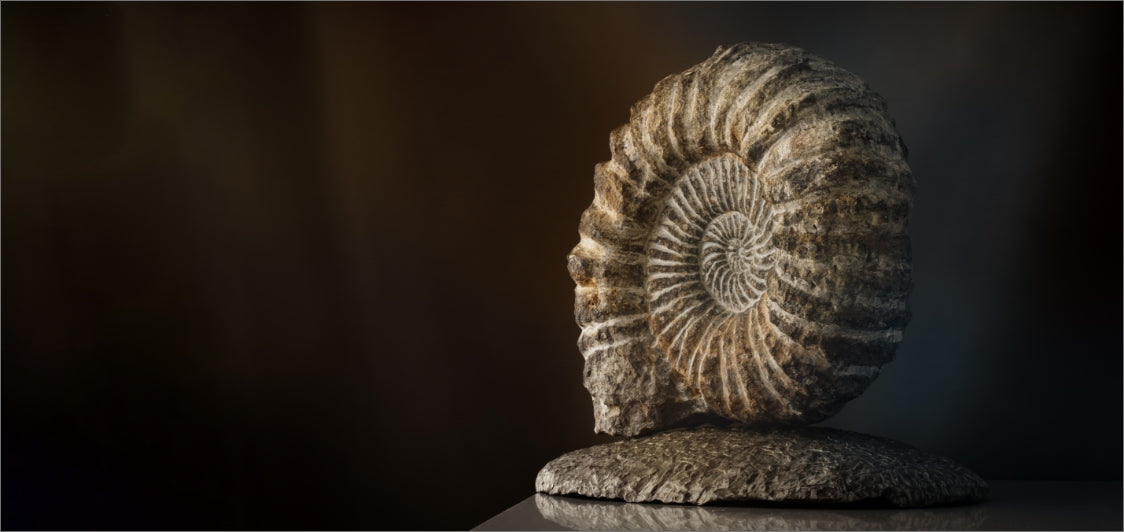
The oldest known fossils
The snail is a gastropod mollusk . The oldest known snail fossils date from the Cambrian 541 million years ago. That is more than 200 million years before the appearance of the 1st dinosaurs and therefore + or – 534 million years before the 1st men. We can already admit that if this little animal has so many years of natural evolution, it is because its anatomy is particularly well adapted to life.
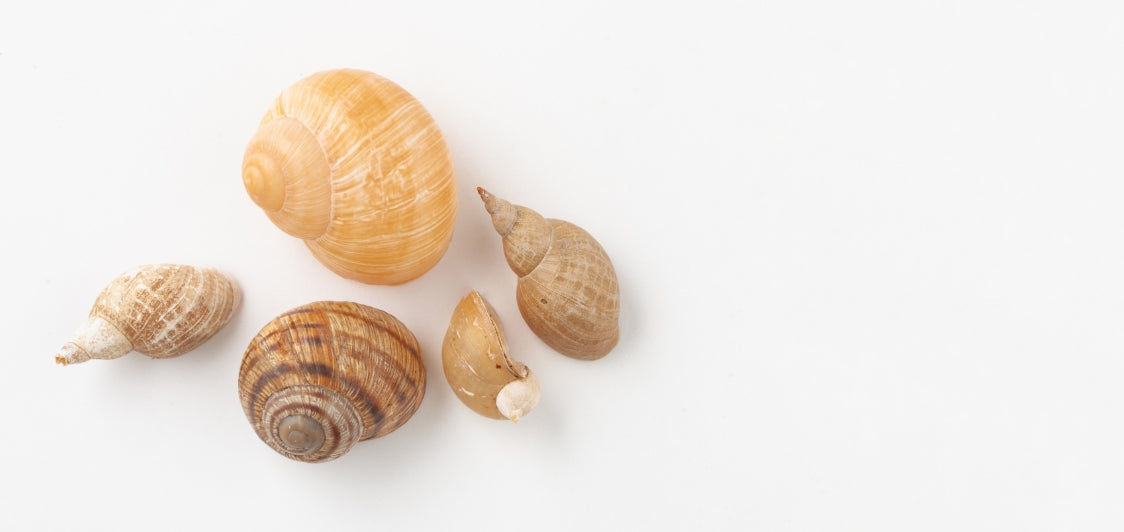
The snail present in all walks of life
The term "snail" applies to most molluscs that use a supply of air in their lungs. With more than 100,000 species of terrestrial and marine snails, it is present everywhere on the planet (mountains, polar waters, deep seas, lakes, rivers, arid environments).
Among the most common land snails are the Gros-gris, the Petit-gris, the Burgundy snail, the hedge snail. His shell allowed him to evolve in all walks of life.
A Gros-gris snail is an adult after 2 years and lives on average 5 years, if it is not devoured by a predator. In captivity, snails live 10 to 15 years.
It's amazing to think that a mode of defense as simple as curling up in your shell is so effective in passing through time.
~~~~~

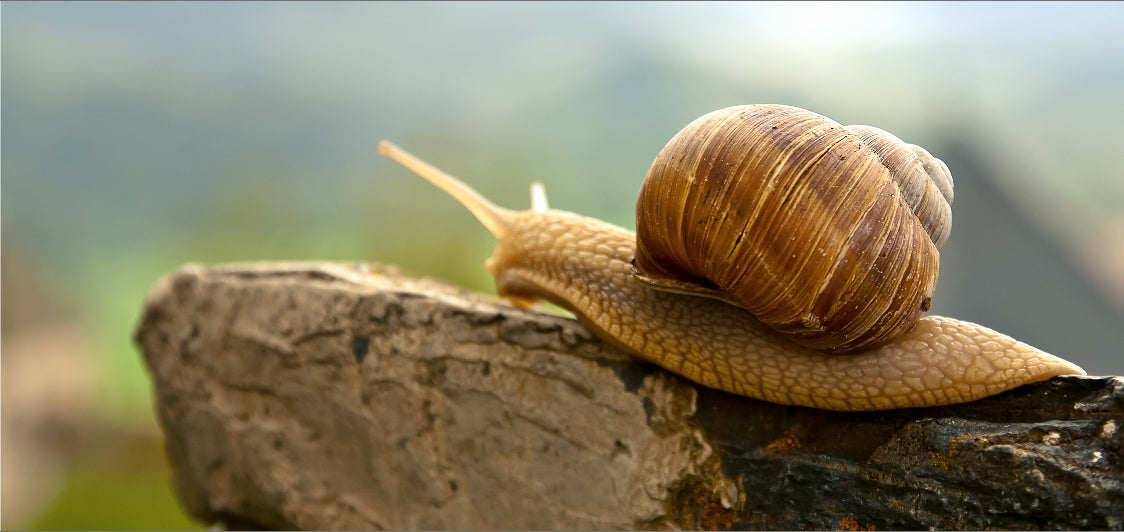
The snail never backs down
The snail crawls by crawling movement, it only moves forward and on one foot which is a gigantic muscle. A "Gros-gris" can travel 7 to 9 cm per minute, it can also move up to 170 times its weight. In other words, a snail weighing for example 10 grams can displace a weight of about 1.7 kg. Which would represent almost 12 tons for a 70 kg man.
Its slime allows it to slide over rough surfaces and to attach itself vertically to certain walls. This slime is called mucus and is secreted by several different glands. If the snail feels in danger, it blows bubbles with its slime. The bubbles come out of his lung. The mucus can be thick, so it leaves a shiny streak in the light and dries as it hardens in the air. The snail uses its mucus to seal its shell. Its adhesion can be demonstrated if a snail is moved on various supports: glass, blotter, glossy paper, sand, earth.
His mucus protects him from the ground so well that he could walk on a razor blade without cutting himself.
The snail is sensitive to touch, smells and pollution
The snail is 99% active at night: the night coolness and the dew facilitate its movements. The snail is sensitive to touch and smells thanks to its four retractable tentacles (erroneously called "horns"). The two large tentacles have eyes that are little used but which allow it, like small tentacles, to detect smells. The two small tentacles are used to touch it.
The snail has a mouth with a toothed tongue in regular rows called the radula. Our "Gros-gris" has between 15,000 and 20,000 teeth.
The snail is not very sensitive to pollution but it accumulates in its flesh or its shell certain pollutants or toxins: it is moreover a means of evaluating the state of a place in which it evolves. The land snail moves little and therefore bio-accumulates the specificities of its environment during its growth. In a healthy environment rich in biodiversity, it accumulates innumerable vitamins and plant proteins that it carries in its mucus.
As it is phytophagous (feeds on plants) and lays and overwinters in the ground, it is a so-called sentinel species. As proof, their virtual disappearance from a large part of the agricultural territories using pesticides.
Always favor certified organic farming. It is important to pay attention to the place of breeding or the snails found in the wild, as some may have accumulated pollutants in their organism.
~~~~~
The life of the snail

The snail hibernates in winter and aestivates in summer.
Winter is a period of prolonged fasting, which the snail approaches with maximum reserve. This rest can last 4 to 6 months. The snail goes into hibernation as soon as the temperature drops between 15 and 12°C.
In many ectothermic animals (unable to regulate their temperature) winter also corresponds to a slowing down of their rhythm of life.
From November to March, our "Gros-gris", seal their shell with a cover called the epiphragm (see photo opposite) and stop feeding. They slow down their vital functions. At 38°C, heartbeats decrease by 100 per minute and by 1 per minute below 0°C.
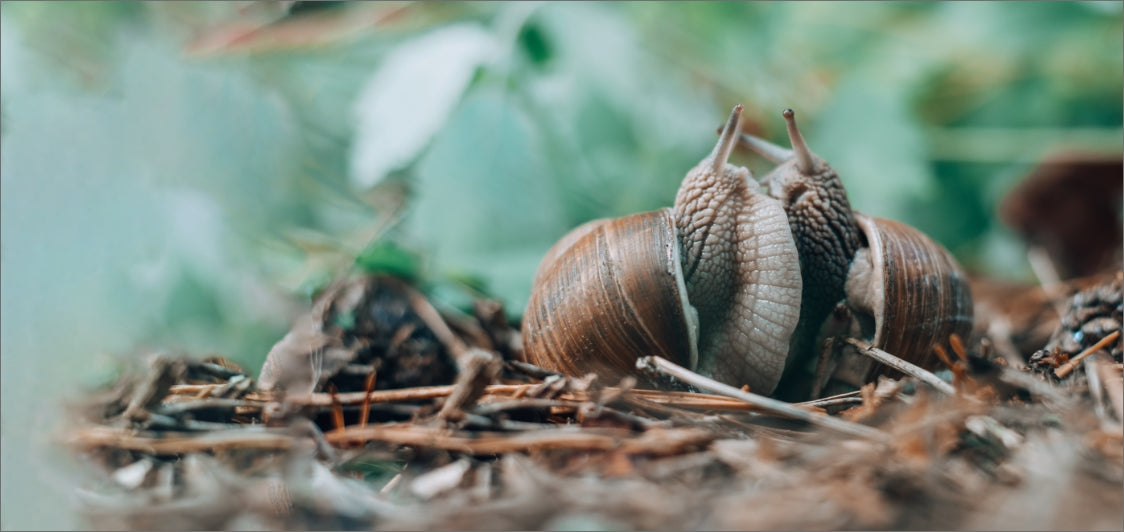
The reproduction
The snail is hermaphrodite. It has male and female organs and reaches sexual maturity around 7 months.
However, a coupling between two individuals is obligatory to reproduce, the two partners then exchanging spermatozoa which are first stored in the seminal reservoir and will later be used to fertilize the ova. They are first male then female. Mating takes place in spring, sometimes also in autumn, depending on the climate. It can last a dozen hours. The snail secretes a small calcareous sting and pushes it into the genital orifice of its partner, on the side of the head. Its seminal reservoir, called the spermatheca, allows it to fertilize for several years unrelated to other partners.
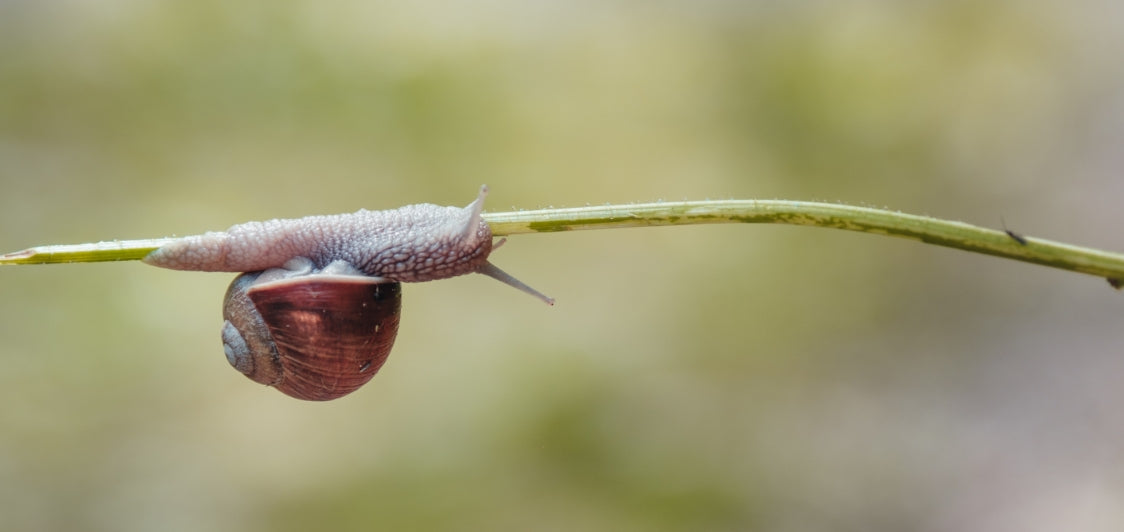
All about the power of the snail.
The snail has many resources to evolve quietly but never back down. He can repair his shell in a few days, move 150 times his own weight or walk on a razor blade without cutting himself. And all thanks to his secret weapon: his MUCUS.
LEARN MORE